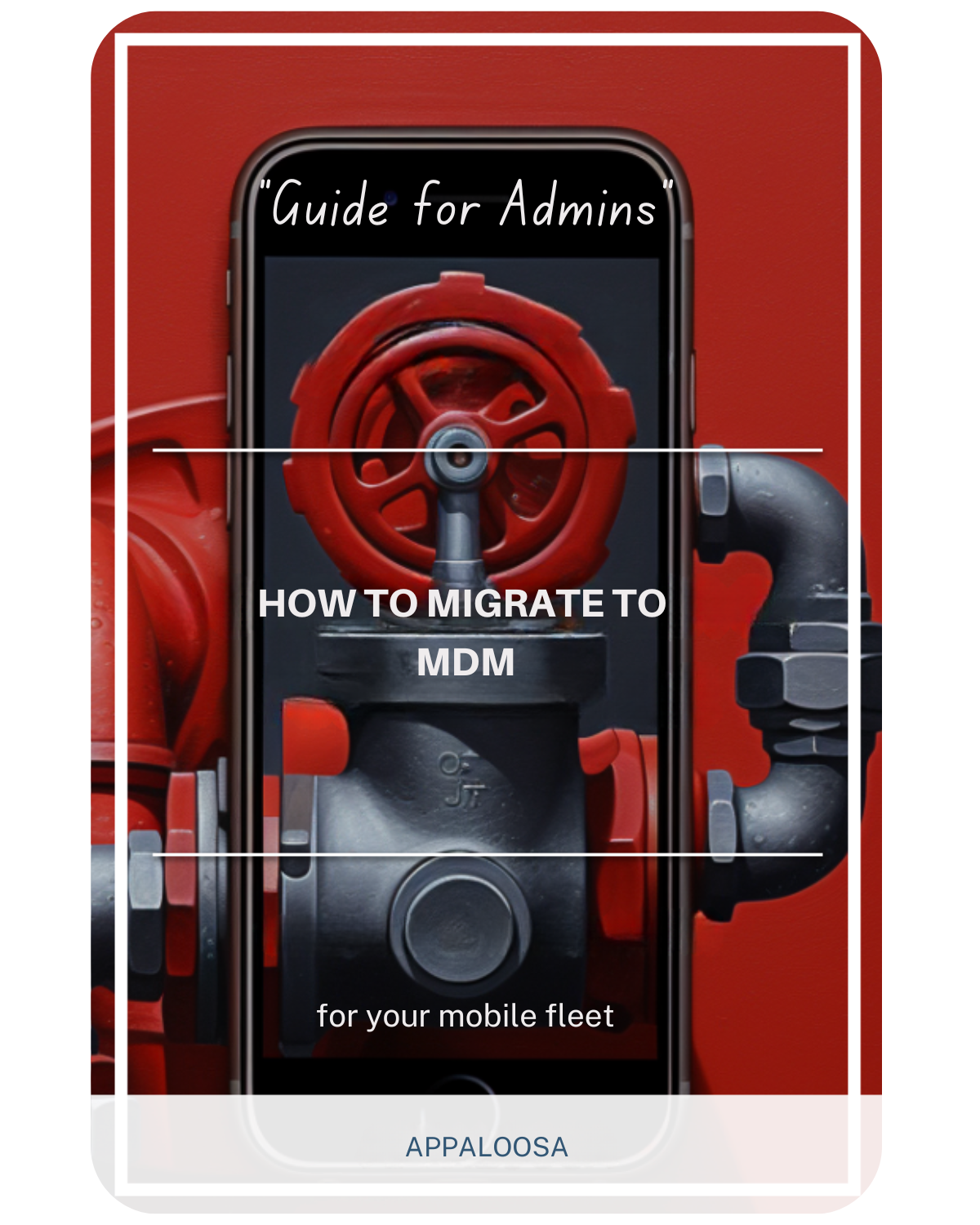IOS MDM Migration: Best Practices and Tips

Migrating your organization's iPhones and iPads to a new Mobile Device Management (MDM) platform can feel like switching carriers for hundreds of phones simultaneously.
The process requires careful planning, the right tools, and a deep understanding of device management in iOS.
Whether you're looking for the best MDM for iOS or upgrading your current system, this comprehensive guide will help you navigate the transition while ensuring you can protect sensitive data and maintain business continuity.
Understanding iOS MDM Migration
Mobile Device Management migration involves transferring your fleet of iOS devices from one MDM solution iOS platform to another. This process traditionally required IT teams to physically handle each device, manually unenroll from the old system, and re-enroll in the new one.
However, with modern apple device management tools and features like Return to Service, organizations can now remotely manage this transition more efficiently.
Why Organizations Migrate MDM Solutions
Companies switch their MDM solutions for iOS for various reasons:
- Cost optimization: Finding more affordable solutions without compromising features
- Enhanced features: Upgrading to platforms that better enforce security policies
- Improved user experience: Selecting an iOS mobile device manager with better interface and functionality
- Compliance requirements: Choosing solutions that better ensure compliance with industry regulations
- Scalability needs: Moving to platforms that can handle growing device fleets in real time
The Power of Return to Service
Apple introduced Return to Service with iOS/iPadOS 17, revolutionizing how IT teams migrate devices. This feature allows administrators to remotely manage device transitions by:
- Sending a remote wipe command that includes Wi-Fi configuration
- Automatically re-enrolling devices in the new MDM
- Ensuring each device configured properly without physical intervention
This capability transforms what was once a manual, time-consuming process into an automated workflow that works seamlessly for devices remotely.
Prerequisites for Successful Migration
Before initiating your migration, ensure these requirements are met:
Device Requirements
- iOS/iPadOS 17 or later installed
- Devices enrolled in Apple Business Manager (ABM)
- Activation Lock disabled on all devices
- Stable internet connectivity post-wipe
MDM Platform Requirements
- Current MDM must support Return to Service commands
- New MDM ready to receive devices
- Proper certificates and configurations in place
- App deployment profiles prepared for the new environment
Organizational Preparation
- User data backup strategies implemented
- Communication plan for affected users
- Testing completed on pilot devices
- Support team trained on new platform

Setting Up iPads and iPhones for Business Migration
When setting up an iPad for business use during migration, follow these steps:
- Inventory Assessment: Document all devices, their current state, and assigned users
- Data Backup: Ensure users have backed up personal data (though avoid iCloud restore post-migration)
- Profile Configuration: Prepare Wi-Fi profiles for automatic connection post-wipe
- Testing Phase: Run pilot migrations on test devices before full deployment
Which Settings on iPhone Enable Smooth Transition
To determine which setting on iPhone to have smooth transition, focus on:
- Supervised Mode: Ensure devices are supervised for maximum control
- Automatic Enrollment: Configure devices for zero-touch deployment
- Network Settings: Pre-configure Wi-Fi profiles for immediate connectivity
- Security Policies: Prepare policies that enforce security from first boot
Migrating to ABM: A Critical Step
Migrating to ABM (Apple Business Manager) is often the foundation of successful MDM migration. This process involves:
- Creating Your ABM Account: Register your organization with Apple
- Device Assignment: Transfer devices from resellers or add manually
- MDM Server Integration: Link your new MDM to ABM
- Automated Enrollment Setup: Configure enrollment settings for seamless deployment
The Migration Process: Step by Step
Phase 1: Planning and Preparation
Start by selecting the best MDM for iOS that meets your organization's needs.
Evaluate platforms based on:
- Security capabilities to protect sensitive data
- Ease of use for administrators and end-users
- Integration with existing systems
- Cost-effectiveness at scale
Phase 2: Configuration
Configure your new MDM solution iOS with:
- User groups and device assignments
- Security policies and restrictions
- App deployment strategies
- Compliance rules to ensure compliance
Phase 3: Pilot Testing
Before full migration:
- Test with a small device group
- Verify app transfer to another phone works correctly
- Confirm policies apply properly
- Document any issues for resolution
Phase 4: Execution
During the actual migration:
- Send Return to Service commands to device batches
- Monitor progress in real time
- Address any failed migrations immediately
- Maintain communication with affected users
Phase 5: Verification
Post-migration checks:
- Confirm all devices enrolled successfully
- Verify security policies are active
- Test remote wipe capabilities
- Ensure apps deployed correctly
Alternatives When Return to Service Isn't Available
For devices that don't meet Return to Service requirements:
Manual Wipe and Re-enrollment
- Traditional method requiring physical device access
- Users must manually complete setup
- More time-consuming but universally compatible
Device Replacement Strategy
- Issue new devices pre-enrolled in new MDM
- Allow users to restore personal data
- Higher cost but ensures clean deployment
Profile Removal Method
- Remove old MDM profile remotely
- Push new enrollment invitation
- Risk of users not completing enrollment
Best Practices for iOS MDM Migration
- Comprehensive Planning: Document every step before starting
- User Communication: Keep users informed throughout the process
- Phased Approach: Migrate in batches rather than all at once
- Backup Strategies: Ensure data protection before any device wipe
- Support Readiness: Prepare help desk for migration-related issues
Common Challenges and Solutions
Challenge: Devices with Personal Data
Solution: Implement cloud backup strategies but avoid restoring old MDM profiles
Challenge: Legacy iOS Versions
Solution: Update devices before migration or use alternative methods
Challenge: Network Connectivity Issues
Solution: Ensure robust Wi-Fi profiles and cellular backup options
Challenge: User Resistance
Solution: Clear communication about benefits and minimal disruption
Security Considerations During Migration
Maintaining security throughout migration is crucial:
- Encrypt data transfers between old and new systems
- Validate device identity before enrollment
- Monitor for anomalies during the transition
- Update security policies immediately upon enrollment
Post-Migration Optimization
After successfully migrating your devices:
- Review and Refine: Analyze migration metrics and improve processes
- Update Documentation: Record new procedures and configurations
- Train Staff: Ensure IT team fully understands new platform
- Monitor Performance: Track device compliance and user satisfaction
Future-Proofing Your MDM Strategy
Choose an iOS mobile device manager that:
- Regularly updates for new iOS features
- Scales with your organization
- Integrates with emerging technologies
- Provides robust reporting and analytics
Conclusion
Successfully migrating your iOS device fleet to a new MDM platform requires careful planning, the right tools, and a clear understanding of apple device management capabilities.
Whether using Return to Service or alternative methods, the key is maintaining security, minimizing disruption, and ensuring all devices remotely transition smoothly to your new MDM solutions for iOS.
By following these best practices and leveraging modern features, organizations can transform what was once a daunting task into a streamlined process that enhances their ability to remotely manage, enforce security, and ensure compliance across their entire iOS device ecosystem.
The investment in proper migration planning pays dividends through improved device management, enhanced security, and better user experiences for years to come.
